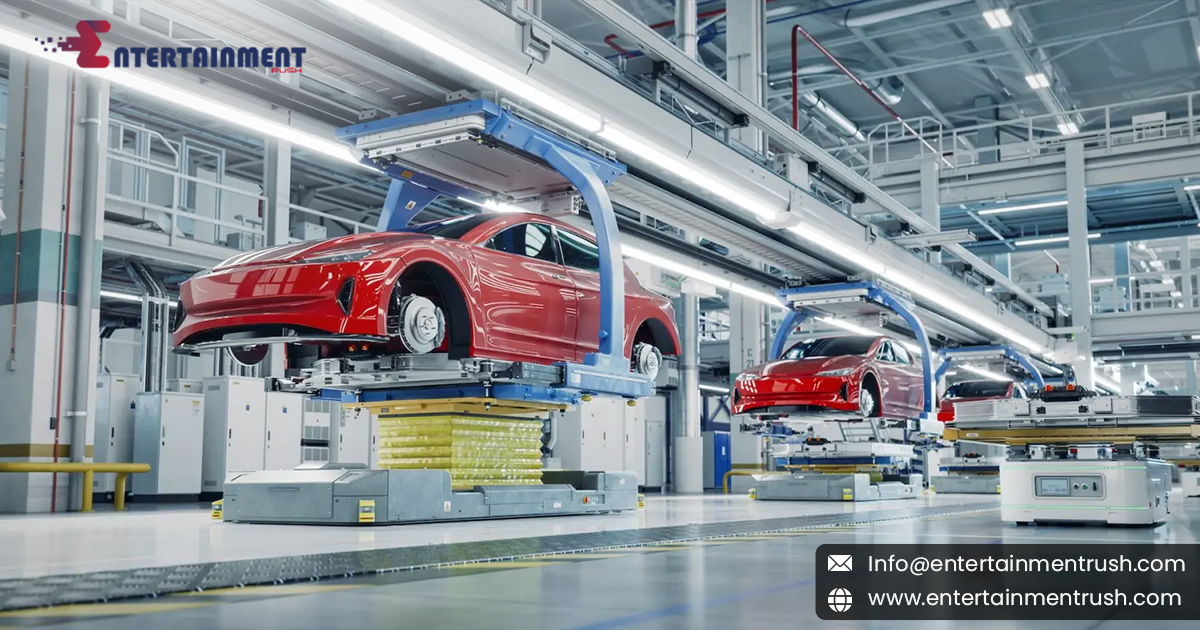The U.S. automotive sector is experiencing a period of rapid transformation, driven by technological advancements, evolving consumer preferences, and new regulatory standards. The focus key phrase, “Auto Trends: Exploring the Latest in the US Automotive Sector,” encapsulates the dynamic changes reshaping the industry. From electric vehicles (EVs) to autonomous driving technologies, the latest trends are redefining the future of transportation and influencing how Americans view and interact with their vehicles.
The Rise of Electric Vehicles (EVs)
One of the most significant auto trends is the surge in electric vehicles. As concerns about climate change and environmental sustainability grow, there is an increasing demand for cleaner and more energy-efficient transportation options.
Increased EV Adoption:
The adoption of electric vehicles is accelerating, driven by advancements in battery technology and growing consumer awareness. Major automakers are investing heavily in EV development, with numerous new models hitting the market. This shift is not only reducing greenhouse gas emissions but also altering the traditional automotive landscape.
Infrastructure Development:
To support the growing number of EVs, there has been a significant expansion of charging infrastructure across the U.S. The development of fast-charging networks and partnerships between governments and private companies are making it easier for drivers to transition to electric vehicles.
Advancements in Autonomous Driving
Autonomous driving technology is another major trend reshaping the automotive sector. Innovations in this area promise to revolutionize how we perceive and experience transportation.
Progress in Self-Driving Cars: Companies like Tesla, Waymo, and Cruise are at the forefront of developing autonomous vehicles. While fully self-driving cars are still in the testing phase, advancements in driver-assistance systems are making vehicles smarter and safer. Features like adaptive cruise control, lane-keeping assist, and automatic emergency braking are becoming more common.
Safety and Regulation: As autonomous driving technology evolves, ensuring safety and developing regulatory frameworks are key priorities. Regulatory bodies and industry leaders are working together to create standards and guidelines that will govern the deployment of self-driving vehicles.
The Integration of Advanced Driver-Assistance Systems (ADAS)
Advanced Driver-Assistance Systems (ADAS) are transforming the driving experience by providing drivers with enhanced safety and convenience features.
Enhanced Safety Features: ADAS technologies include features such as collision avoidance, automatic parking, and blind-spot monitoring. These systems are designed to assist drivers in avoiding accidents and improving overall road safety.
Increased Convenience:
Beyond safety, ADAS technologies also enhance the driving experience by offering convenience features such as adaptive headlights and intelligent navigation systems. These innovations make driving more comfortable and enjoyable.
Connectivity and Smart Technology
The integration of connectivity and smart technology into vehicles is another prominent trend. Modern cars are becoming more connected, offering a range of features that enhance the driving experience.
In-Car Connectivity:
Vehicles now come equipped with advanced infotainment systems that support smartphone integration, voice commands, and real-time navigation. These features provide drivers with greater access to information and entertainment while on the road.
Over-the-Air Updates:
Similar to how software updates are managed for smartphones, automotive manufacturers are now offering over-the-air updates for vehicle systems. This allows for continuous improvement and enhancement of vehicle features without requiring a visit to the dealership.
Sustainable Practices and Eco-Friendly Innovations
Sustainability is a growing focus within the automotive sector, with manufacturers and consumers increasingly prioritizing eco-friendly practices.
Hybrid and Plug-In Hybrid Vehicles:
In addition to fully electric vehicles, hybrid and plug-in hybrid models are gaining popularity as a bridge between traditional internal combustion engines and fully electric options. These vehicles offer improved fuel efficiency and reduced emissions.
Sustainable Materials:
Automakers are also exploring the use of sustainable materials in vehicle production. From recycled plastics to eco-friendly fabrics, these materials contribute to reducing the environmental impact of manufacturing processes.
The Future of Mobility
The future of mobility is an exciting and evolving frontier. Trends such as shared mobility services, urban air mobility (e.g., flying cars), and innovations in transportation infrastructure are shaping the way people will move in the future.
Shared Mobility Services:
The rise of ride-sharing and car-sharing services is changing car ownership models. These services offer flexible transportation options and reduce the need for individual vehicle ownership.
Urban Air Mobility:
Concepts like flying cars and urban air taxis are being explored as potential solutions to urban congestion. While still in the experimental stage, these innovations could revolutionize city transportation.
Conclusion
“Auto Trends: Exploring the Latest in the US Automotive Sector” highlights the exciting advancements and shifts occurring in the automotive industry. From the rise of electric vehicles and advancements in autonomous driving to the integration of smart technology and sustainable practices, these trends are reshaping how Americans interact with their vehicles and approach transportation. As the industry continues to evolve, staying informed about these developments will be crucial for understanding the future of mobility and the impact on everyday driving experiences.
